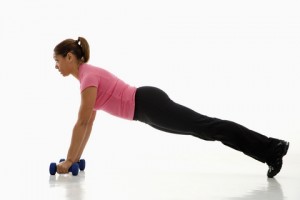What is Delayed Onset Muscle Soreness?
Delayed Onset Muscle Soreness (DOMS) is that achy feeling you get in your muscles, usually accompanied by grunting and groaning, when you try to get out of your chair the day after a strenuous workout, or working in the yard all day, or helping a friend move.
According to David O. Draper, professor and director of the graduate program in sports medicine/athletic training at Brigham Young University in Provo, Utah, “DOMS is a common result of physical activity that stresses the muscle tissue beyond what it is accustomed to.”
While many of us were taught that muscle soreness that appeared 24-48 hours after a workout was caused by lactic acid (which is now known to dissipate within 30 to 60 minutes of ending exercise), the real culprit is microscopic tears in muscle fibers. No wonder it hurts.
Scientists believe that the damage, along with the resulting inflammation, causes the pain. According to Carol Torgan, an exercise physiologist and fellow of the American College of Sports Medicine, “The muscle discomfort is simply a symptom of using your muscles and placing stresses on them that are leading to adaptations to make them stronger and better able to perform the task the next time.”
Any movement you aren’t used to can results in DOMS. The pain is usually greater with increased duration or intensity of exercise. Eccentric muscle contractions seem to cause the most damage. In this case, eccentric refers to a lengthening muscle contraction, not your uncle who collects velvet Elvis paintings. Examples of eccentric muscle contractions include running downhill, lowering weights and the downward motion of squats or push ups.
While muscle soreness is actually a sign that you are using your muscles in a way that will make them stronger (assuming the soreness is minor and not the result of an injury or overuse), people new to working out may think that something is wrong. Rest assured, it’s perfectly normal and happens to everyone, from exercise newbies to elite athletes. It’s the body’s way of letting you know that your workout is working.
It’s important to note that minor muscle pain is not a requirement for a good workout. Working out without experiencing DOMS can be just as effective. The old adage “no pain, no gain” doesn’t always apply.
What you do after a workout can help minimize DOMS and speed recovery. Here are a few post-workout suggestions from about.com’s sports medicine section:
- Rest
- Gentle stretching
- Cool down: slow down but don’t stop completely
- Eat properly
- Replace fluids
- Try Active Recovery: perform low intensity exercises after workouts
- Get a massage: you might want to try a foam roller or my personal favorite, The Stick, to avoid the price tag of a sports massage
- Take an ice bath or try contrast water therapy (alternating between hot and cold water)
- Get lots of sleep
- Avoid overtraining
And remember to listen to your body. There will be days when you simply may be too tired and/or too sore to workout. Give yourself a well-deserved break but don’t give yourself excuses. You might want to try cross-training and alternating upper body and lower body workouts so you don’t have to worry about overworking the same muscle groups day after day.
I leave you with a quote from Plato “Lack of activity destroys the good condition of every human being, while movement and methodical physical exercise save it and preserve it.”

Recent Comments